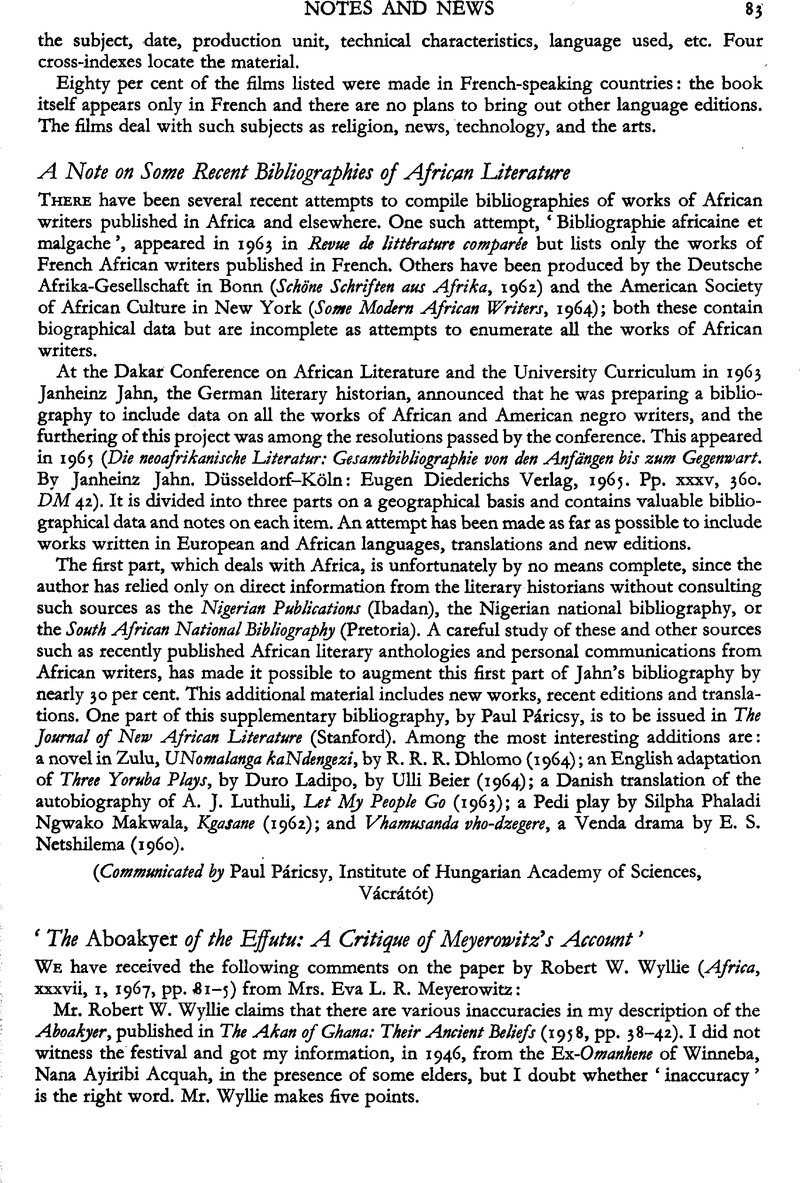No CrossRef data available.
Article contents
‘The Aboakyer of the Effutu: A Critique of Meyerowitz's Account’
Published online by Cambridge University Press: 23 January 2012
Abstract

- Type
- Notes and News
- Information
- Copyright
- Copyright © International African Institute 1968
References
page 84 note 1 Meyerowitz, Eva L. R., Akan Traditions of Origin, 1952, pp. 74, 75.Google Scholar
Mr. Wyllie missed a printing error in The Akan of Ghana, p. 40, second para. first line. It should be ‘the Dentsifo use bugles and bull-roarers ’ and not ‘beagles and bull-roarers’.
page 84 note 2 Priests are sometimes trained nowadays in Mossi or Dahomey and return with new ideas which they are able to put into practice in places where the knowledge of old customs has gradually deteriorated.
page 85 note 1 Information given to me in 1946 by elders at Degho, a village on the coast a few miles from Winneba. Moreover, it was the custom for conquerors to adopt the deity of the land.
page 85 note 2 I was told by several people in Winneba that Sekum Apa was the old name of Penkye Otu; but the people at Degho made it clear to me that Sekum Apa was an Etsi god, once worshipped at Apa and Degho.
page 85 note 3 The original totem animal of Sekum Apa was not the wansam but the lion, or more likely the ‘white tyger ’, as it is doubtful whether lions lived in the hinterland of the coast. The ‘white tyger ’ is mentioned in the Atlas Geographicus of 1714, vol. iv, p. 402, and was a great light-coloured cat which fell upon the cattle and goats of the villagers. I could not get any information about when the wansam took its place, presumably when it died out. The only people who would still know something of the origin and original significance of the Aboakyer are the Etsi but they seldom give information, for reasons stated in the author's Akan Traditions of Origin, 1952, p. 65, n. 3.


